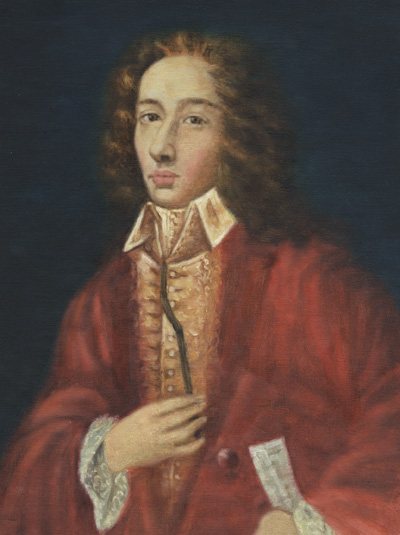Amidst the rich and ornate soundscape of the Baroque era’s compositions, few threads shine as brightly or as briefly as that of Giovanni Battista Pergolesi. Born on January 4, 1710, in Jesi, a small town in the Marche region of Italy, Pergolesi’s life was a blazing comet across the musical firmament of the 18th century, burning out all too soon but leaving an enduring legacy.
Picture a young Giovanni, his eyes wide with wonder, as he first hears the soaring melodies of the church choir in his hometown. Born into a family of modest means, Pergolesi’s musical talent was evident from an early age. His father, Francesco Pergolesi, a land surveyor, recognized this gift and ensured his son received proper musical education.
At the tender age of 12, Pergolesi was sent to Naples, then a thriving center of musical innovation. The bustling city, with its narrow streets and grand churches, must have been a stark contrast to the quiet life in Jesi. Here, under the tutelage of renowned masters like Gaetano Greco and Francesco Durante at the Conservatorio dei Poveri di Gesù Cristo, young Giovanni honed his skills in composition and violin.
Pergolesi’s talent blossomed quickly. By his early twenties, he had already composed his first opera, “Salustia,” which premiered at the Teatro San Bartolomeo in Naples in 1732. Though not an immediate success, it marked the beginning of a prolific, albeit brief, career.
It was his comic opera “La serva padrona” (The Maid Turned Mistress), first performed in 1733, that would secure Pergolesi’s place in musical history. This intermezzo, originally performed between acts of a more serious opera, became a sensation in its own right. Its lively melodies and witty portrayal of class dynamics struck a chord with audiences, helping to establish the opera buffa genre and influencing composers for generations to come.
Pergolesi’s life was not without its struggles. Despite his growing reputation, he often found himself in financial difficulties. In 1734, he was appointed maestro di cappella to the prince of Stigliano, a position that provided some stability. It was during this time that he composed some of his most significant sacred works, including the hauntingly beautiful “Stabat Mater.”
Imagine Pergolesi, his health already failing, pouring his heart and soul into the “Stabat Mater.” This piece, commissioned by the Confraternità dei Cavalieri di San Luigi di Palazzo, would become his most famous composition. Its delicate melodies and profound emotional depth seem to foreshadow the composer’s own impending fate.
Tragically, Pergolesi’s brilliant career was cut short by tuberculosis. In 1736, at the age of just 26, he retreated to the Franciscan monastery in Pozzuoli, near Naples. Here, in a small, austere cell, he spent his final days completing the “Stabat Mater.” One can almost picture the young composer, his face gaunt but his eyes still burning with creative fire, scratching out notes on parchment as he raced against time.
Giovanni Battista Pergolesi passed away on March 16, 1736, leaving behind a body of work that belied his young age. In addition to his operas and the “Stabat Mater,” he composed numerous sacred works, including masses and motets, as well as secular instrumental pieces.
Pergolesi’s influence extended far beyond his short life. His innovative approach to melody and his skill in blending sacred gravity with operatic expressiveness inspired composers like Johann Sebastian Bach, who adapted the “Stabat Mater” for his own purposes.
In the grand opera of musical history, Pergolesi’s role may have been a short one, but his aria continues to resonate through the centuries, touching hearts and inspiring musicians to this day. His story reminds us that true greatness is not measured in years, but in the depth of one’s contribution to the world.


